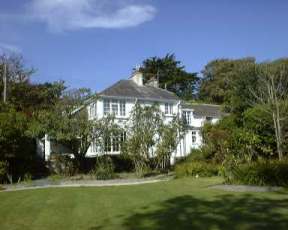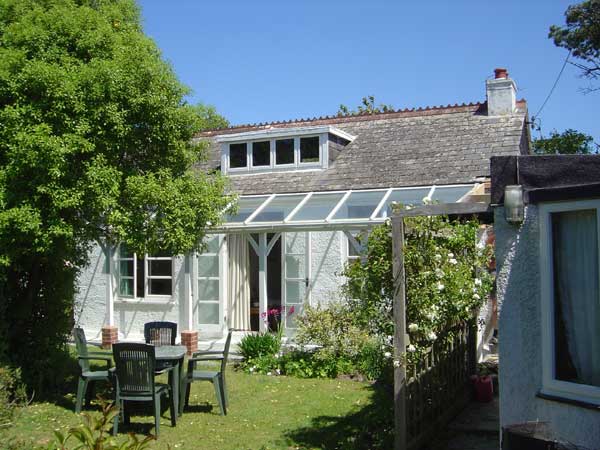Daymer Cottage was built in 1987 by Dr Colin Hallward and his wife Diana, on land which was previously the bottom of Whitebays’ garden. They actually acquired the site in 1975 from Hugh and Nancy Edwards, and first of all put up a well-built solid boathouse, at the foot of the property near the lane, for easy access. John Betjeman did not like his view of the boathouse from Treen opposite, telling Colin that it reminded him of a Wesleyan Chapel of Rest. (And Colin says that John Betjeman referred to the public conveniences in the car park as Tretoilets.)
The land had originally belonged to John Betjeman’s father Ernest, who had imposed 23 clauses of constraints on development, including that new houses had to be constructed of Cornish stone, with sash windows and Delabole slate roofs. Colin maintains that he would have done all these even if there had been no clauses requiring him to!
Colin’s connections with Trebetherick go back to 1945 when he was a boy. His parents had known the Oakleys in India – where his father served in the Border Regiment; Colin himself was born in Rawalpindi. His family used to spend summer holidays at Whitebays after the Second World War. He remembers John Betjeman standing on the cliffs above Jutty Out and talking to anyone who passed by, and “great gatherings of numerous families at Gully. The children were kept amused by a splendid Mr Mansell who used to do belly flop dives over and over again… On Wednesday evenings there was a film show [at the Dormy House Hotel in Rock] which we children loved, with such films as ‘The Lavender Hill Mob’ and ‘Kind Hearts and Coronets’… Also we used to have a sports afternoon on Daymer beach with such events as the egg-and-spoon race and the wheelbarrow race, with prizes for the winners… Milk in those days was delivered in bottles from the dairy at the foot of the hill out of Polzeath, where there was a garage selling wooden surfboards and petrol. The Post Office was called Males and there was a splendid shop called Couch’s which sold hot chocolate which was marvellous after surfing.” One story is that the wife of one of the Polzeath shopkeepers back at the turn of the century came from South Africa, where local people rode the surf on boards made of long strips of bark, and this is how surfing was introduced to Cornwall.
Colin recalls a cine film taken by his mother in 1937 which “showed a sequence taken near the front door of Whitebays looking through the white stone arch, and one could see the sea”.


